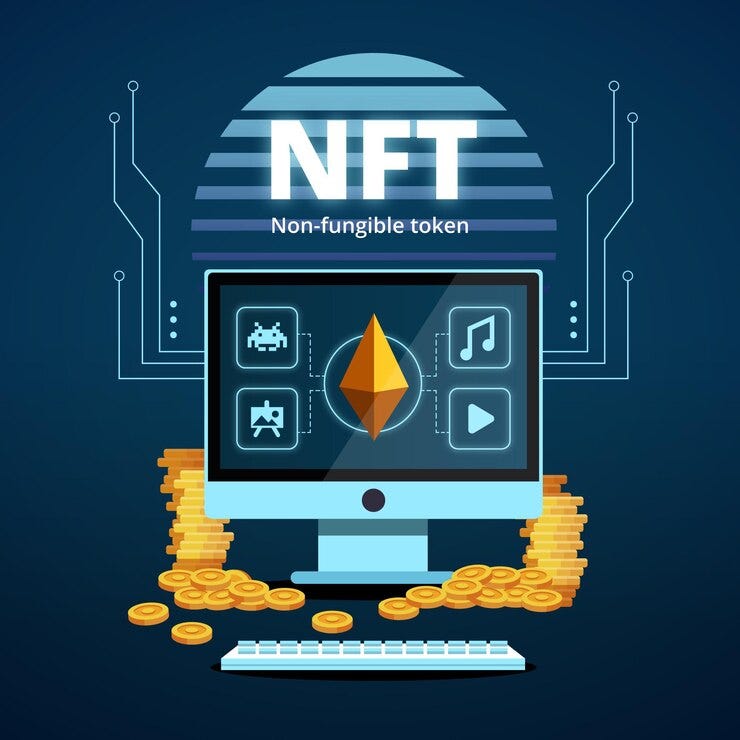Navigating the NFT Liquidity Landscape: A Comprehensive Guide

Introduction:
In the dynamic world of blockchain and crypto, the concept of Non-Fungible Tokens (NFTs) has taken center stage, revolutionizing the way we perceive and trade digital assets. However, as the popularity of NFTs grows, so does the challenge of liquidity. Unlike traditional cryptocurrencies, NFTs are unique, making it challenging to establish a liquid market. In this article, we will delve into the innovative solutions and tools that are reshaping the flow of NFT liquidity.
The Liquidity Challenge:
Liquidity, the ease of buying or selling an asset without affecting its market value, poses a unique challenge for NFTs due to their distinct nature. Each NFT is a one-of-a-kind digital asset, complicating the establishment of a liquid market. To address this, various platforms and tools have emerged, each contributing to the enhancement of NFT liquidity.
Fractionalization:
One innovative approach to boost NFT liquidity is fractionalization. Platforms like Fractional enable NFT owners to break down their tokens into smaller, tradable fractions. This not only makes NFTs more accessible to investors with varying budgets but also enhances overall liquidity in the market.
NFT Marketplaces:
Established NFT marketplaces like OpenSea, Rarible, and SuperRare have continuously refined their interfaces and introduced features to streamline NFT trading. These platforms act as marketplaces for both creators and collectors, facilitating liquidity through auctions, instant sales, and secondary markets.
NFT Index Funds:
Platforms like NFTX have introduced NFT index funds, pooling together a selection of NFTs. Investors can then buy shares in the fund instead of individual NFTs, providing diversification and liquidity to NFT investors.
DeFi Integrations:
Decentralized Finance (DeFi) protocols have integrated NFTs, offering exciting liquidity solutions. Projects like Aavegotchi and NFTfi allow NFT owners to collateralize their assets, unlocking liquidity without the need to sell.
NFT Liquidity Protocols:
NFT liquidity protocols play a crucial role in addressing liquidity challenges by allowing NFT holders to use their assets as collateral to borrow funds. This not only provides immediate liquidity but also opens avenues for income generation and portfolio diversification.
Unlocking Liquidity:
These protocols enable the monetization of NFTs by using them as collateral for loans, providing a flexible borrowing option tailored to individual financial needs.

Flexible Borrowing Options:
NFT liquidity protocols offer customizable loan terms, allowing users to tailor their borrowing experience to suit their financial requirements.
Income Generation:
NFT holders can lend their assets on these platforms, earning passive income by collecting interest on their holdings. This not only provides a passive income stream but also ensures ownership and potential future appreciation of the NFTs.
Portfolio Diversification:
Leveraging NFTs as collateral allows users to free up capital for investment in other asset classes, participate in new projects, or seize other investment opportunities.
Speculation and Leverage:
Users can borrow against their NFTs to acquire additional assets, amplifying potential gains if the value of their NFTs appreciates. However, this introduces amplified risk, requiring careful consideration and risk management.
Community Engagement:
NFT liquidity protocols foster vibrant communities, providing networking and knowledge-sharing opportunities among NFT enthusiasts and investors.
Notable NFT Liquidity Platforms:
1. NFTX:
NFTX stands out as a platform creating liquid markets by tokenizing NFTs. This process allows users to trade NFTs on exchanges like traditional cryptocurrencies, significantly enhancing their liquidity.
2. NiftyPays:
NiftyPays simplifies the entry for newcomers by enabling the purchase and sale of NFTs using credit cards, providing a seamless on-ramp to the NFT market.
3. NFT Trader:
NFT Trader offers a secure platform for users to swap NFTs peer-to-peer, facilitating cross-asset swaps (ERC-721/ERC-1155/ERC-20) with ease and security.
4. DODO and Deri:
Platforms like DODO focus on liquidity algorithms, while Deri introduces trading in NFT derivatives, showcasing the dynamic and evolving nature of NFT liquidity solutions.
Consolidation and Partnerships:
The consolidation and partnership trend in the NFT space extends to various industries like sports, gaming, and music. Improved liquidity could drive further integration of NFTs in these sectors, influencing fan engagement, memorabilia, and innovative use cases in gaming and music.
Conclusion:
NFT liquidity tools and protocols play a pivotal role in overcoming the inherent challenges of liquidity in the NFT market. These solutions enhance market efficiency, offer diverse financial opportunities to users, and contribute to the maturation of the NFT space. As the blockchain and NFT ecosystem continues to evolve, the innovative tools and protocols discussed in this article pave the way for a more accessible, liquid, and engaging NFT market.
Navigating the NFT Liquidity Landscape: A Comprehensive Guide was originally published in Coinmonks on Medium, where people are continuing the conversation by highlighting and responding to this story.
